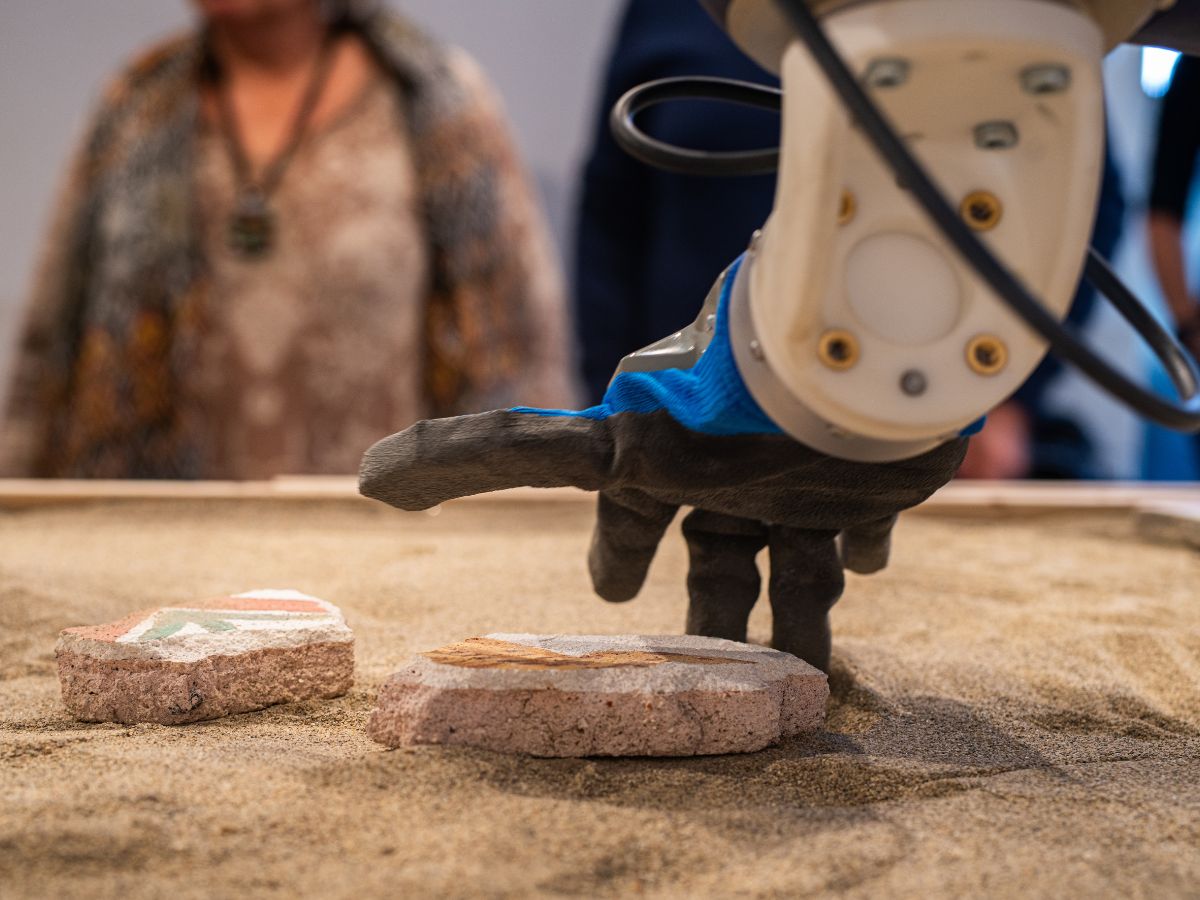From printed and flexible electronic to the Internet of Things, a tour among the new technologies developed by the IIT Center for Nanotecnology.
In the shade of Milan’s first reinforced concrete building, known as “The Kremlin (1927)”, in the heart of Città degli Studi, you’ll find the IIT Center for Nanoscience and Technology (CNST IIT) . Here Guglielmo Lanzani, dividing his time between the Center and the Politecnico, conducts an orchestra of nanotechnologists coming from all over the world. Average age is 30, they get here cycling, English and Italian mixing up while they put on their shoe-covers and smocks before entering the microelectronic lab.
Mario Caironi, an ERC grant in printed electronic from Cambridge, shows us around. Back in Italy, he obtained the teaching qualification, but resulted as much excellent as “unsuitable” for the electronic engineering chair. The IIT was able to call him back to Italy by offering him a lead researcher position and negotiating a salary adequate to his ambitions, something that would have been quite impossible anywhere else in Italy.
The first machine that you see entering the room is an industrial printer loaded with a PET plastic sheet sliding over a roll. It prints out micro solar panels that, instead of silicon, use photosensitive organic substances.
OMET, a company based in Lecco and specialized in high technology printing, has provided the printer. Usually printing anything from food labels to scratch-and-wins, OMEC has now seen a new possible market, thanks to the IIT studies, in these micro “solar” panels implantable onto sensors and small household or office appliances and capable of providing their electrical supply by exploiting also artificial light. A small microelectronic revolution that will allow powering all the many devices connected to the mains supply or charged by batteries so far. Now some kind of plastic label “brushed” with photosensitive material able to generate electricity from light, artificial light included, will be enough.
To sustain this new adventure, OMET and some of the IIT researchers who have been working on the micro panels for the last few years – Antonio Iacchetti and Michele Garbugli, the director of the IIT Centre Guglielmo Lanzani, Mario Caironi and Dario Natali (Professor at the Politecnico di Milano affiliated to the IIT) – have founded the start-up Ribes Tech. OMET will fund all Ribes activities and will provide the printing machines necessary for the electronic production.
Printed electronic is a new sector in full development, with many possible applications. From the different workstations within the IIT Lab in Città Studi, PhD students and post-doctoral researchers are busy experimenting the new printable devices: micro transistors, photo detectors, thermoelectric materials able to recover energy from heat dispersion. The challenge – explains Mario Caironi – will be to power all the devices in the growing world of the Internet of Things. Not just powering them with the energy that can be “squeezed” from heat dispersion or artificial building lighting, but also making this object “smart” employing non-classic electronic. One of the applications they are currently working on in this lab, for example, is the “digital plate” for x-rays, or small sensors able to measure the blood oxygen percentage without pricking the patient’s fingers.
At the IIT Center in Milan they are also studying organic transistors that can be ingested. The microcircuits are printed using compatible organic substances like shellac and cellulose, the same ones used for children tattoos and decals, to be clear. These labels are slightly more than one centimetre-squared and could be stuck onto one cherry, one slice of ham or a drug capsule. At all effects, they are just like tiny transmitter receivers that, by entering our organisms and before digestion destroy them, can monitor chemical-physical parameters and communicate them to the outside. The goal could be to find out if patients are regularly taking their medicines or to measure their internal pH, oxygen concentration, presence of antibiotic-resistant bacteria, so to promptly implement personalised therapies. The development of these digestible devices involves groups of doctors working at the IEO, San Raffaele and other Hospitals, whom are interested in these new diagnostic tools.
Micro labels will be largely employed also by the research on food conservation and traceability. From within the package, in fact, they will be able to send information about the organoleptic qualities of the food, making the expiry date more checked than ever.
Everything in the IIT labs in Milan starts with fundamental physics experiments and ends with the development of the device, for the technological transfer. Like the pump probes, used to study the electronic processes of materials and semiconductors over time, which have a femtosecond (10-15) precision. In order to do so, a laser beam hits a target with a 50 femtoseconds frequency, the pulse reaches the target under-observation several times with different delays determined by the different paths, in order to study the characteristics of the response to the solicitation.
In respect to a normal university department – notes Lanzani – the IIT Center for Nanotechnologies is not based on the discipline but on the problems that need to be solved. What does it mean? It means to gather in one place minds and machines to tackle certain problems from basic research to practical applications up to – when you win it all – a patent and the birth of a new start up.




